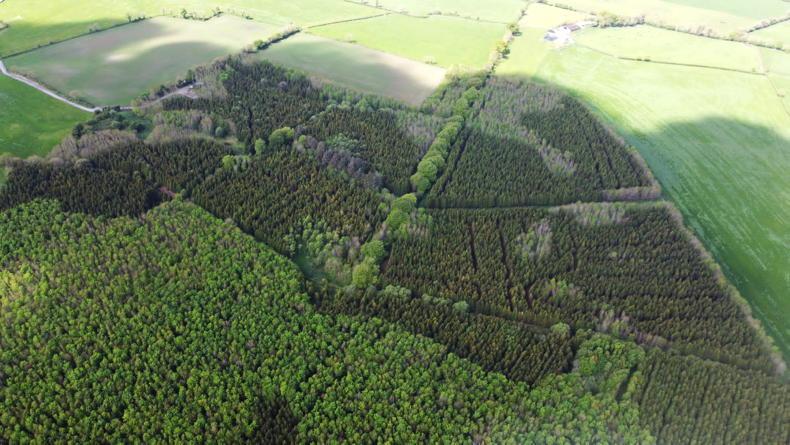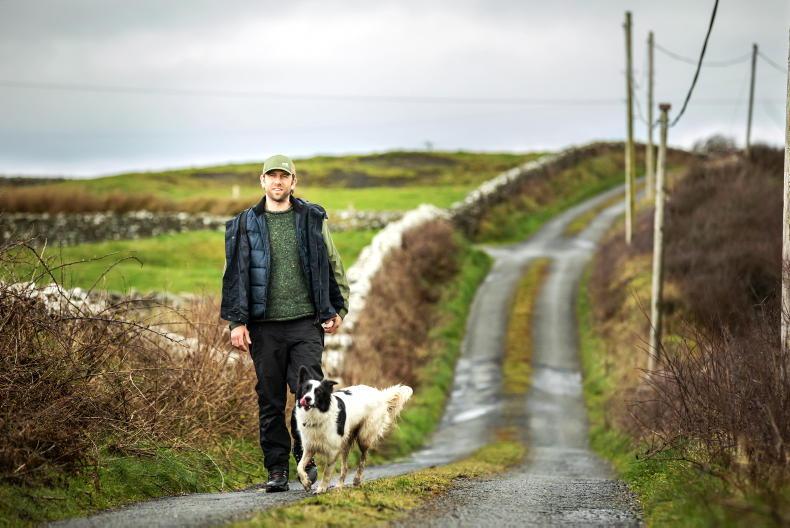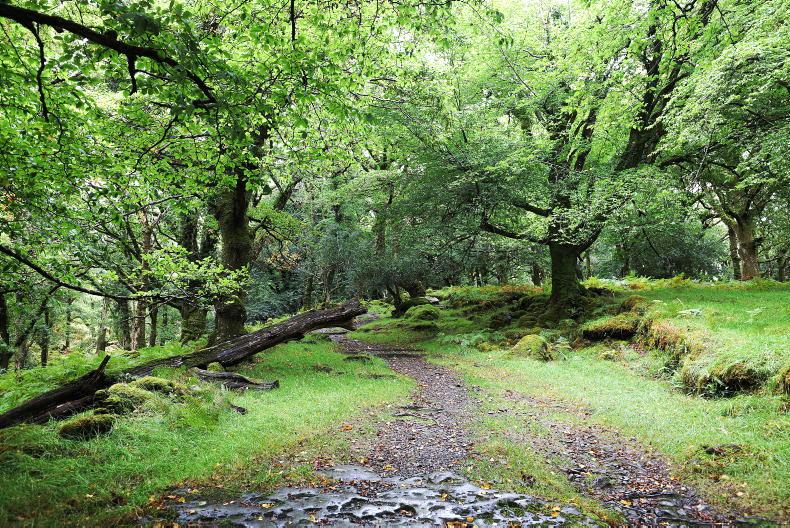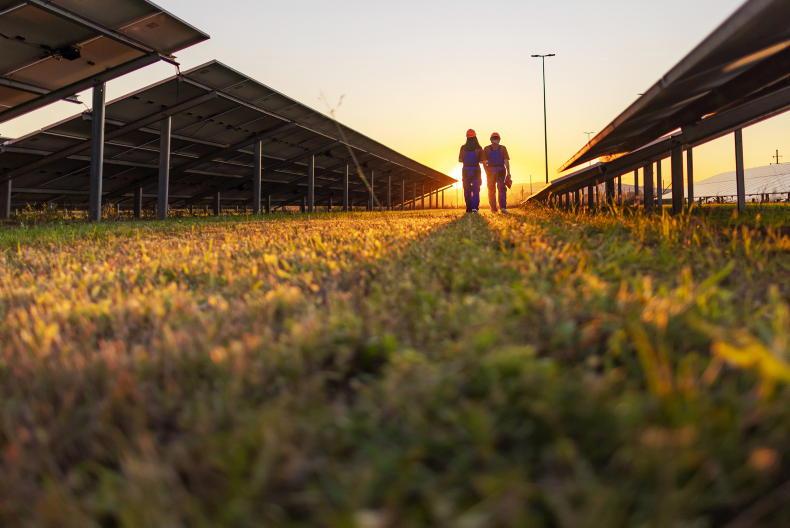Forestry can be a valuable asset to any farming enterprise, working as a pension, a college fund or a savings account, as well as a carbon store, a space for biodiversity and a legacy for future generations.
Since the early 1990s, Ireland saw a five-fold increase in the area of privately owned forests planted, the majority by farmers, with over 50% of the national forestry estate now in private ownership.
But planting, particularly by farmers, has completely stagnated in recent years and only a proportion of those farmers who did plant are actively engaged in forestry.
Like all other parts of agriculture, there are ever-increasing demands being put on our forests to deliver more and more – for people, for the environment and for climate.
The sector has also been through a period of significant disruptions and delays that has damaged farmers’ confidence. This has led to many farmers and forest owners being disillusioned and disengaged with forestry.
There are also many new and ongoing challenges facing forest owners and the industry as a whole. These include an overly bureaucratic regulatory system that still does not deliver for forest owners, a shortage of skilled forest workers, fewer young people studying forestry, a suite of new regulations coming from the EU, a lack of certified timber coming from the private sector, little to no succession planning, a need for professional standards in the industry and a lack of urgency in dealing with ash dieback disease.
But, equally, we need to engage more and more farmers and landowners in forestry to meet our legally binding climate change obligations, for the sustainable production of materials for our construction and energy sectors, for rural employment and development, and for our environment.
So, how do we start to tackle all these issues and build a forest culture in Ireland that is seen as an active and rewarding part of land stewardship?
First, the Department of Agriculture, Food and the Marine must place forest owners/landowners at the centre of all forest policy, with forestry fully integrated with all other agricultural enterprises on a whole farm basis. The Department also needs to deliver on all the recommendations in the numerous reports on forestry that have been commissioned over the past five years. 
Section of the 20ha Leavy family forest, comprising 13.5ha Norway spruce and 6.5ha broadleaves including sycamore, ash, beech and birch. The forest is managed according to the principles of continuous cover forestry (CCF) and is currently being underplanted with western red cedar and oak in the ash plantation which is being cleared after ash dieback infection.
Second, farmers and forest owners must be supported and encouraged to be actively involved in the management of their own forests. Gone are the days of the land being planted with a single-tree species and the gate closed until it was near time to harvest. Indeed, forestry is the only land-use option in Ireland that does not require the landowner to undergo training. If we want to start building a forest culture in Ireland, and to better manage our forestry estate, we need to properly engage and inform forest owners, starting even before the trees are planted. This early training should form part of a continuous learning and development programme that reflects the long-term nature of forestry and forest management. Third, the economic viability of an evolving national forestry estate must be assured. Greater investment is needed in new markets for a wider range of timber types and sizes, better supports for the establishment of forests that require more than a generation to deliver financial returns are needed, and ecosystem service payments for areas of forests that cannot provide a return must be delivered. Finally, forest owners themselves need to engage with the training, education and peer-to-peer learning that’s already available. Forest owner groups are a great place to meet other forest owners and share knowledge, gain experience and receive support and advice. These independent, nonpartisan groups are run by forest owners for forest owners and require active membership to succeed. It’s up to us, as forest owners, to engage with, develop and protect our forestry asset.
Dr Olive Leavy, manages the family forest outside Kinnegad, Co Westmeath. She is national coordinator of the Irish Forest Owners and committee member of the North Midlands Farm Forestry Group.
Know what you have.Be involved with the management of your forest – it’s your asset.Get independent advice and engage with what’s on offer.Join a forest owner group.
Forestry can be a valuable asset to any farming enterprise, working as a pension, a college fund or a savings account, as well as a carbon store, a space for biodiversity and a legacy for future generations.
Since the early 1990s, Ireland saw a five-fold increase in the area of privately owned forests planted, the majority by farmers, with over 50% of the national forestry estate now in private ownership.
But planting, particularly by farmers, has completely stagnated in recent years and only a proportion of those farmers who did plant are actively engaged in forestry.
Like all other parts of agriculture, there are ever-increasing demands being put on our forests to deliver more and more – for people, for the environment and for climate.
The sector has also been through a period of significant disruptions and delays that has damaged farmers’ confidence. This has led to many farmers and forest owners being disillusioned and disengaged with forestry.
There are also many new and ongoing challenges facing forest owners and the industry as a whole. These include an overly bureaucratic regulatory system that still does not deliver for forest owners, a shortage of skilled forest workers, fewer young people studying forestry, a suite of new regulations coming from the EU, a lack of certified timber coming from the private sector, little to no succession planning, a need for professional standards in the industry and a lack of urgency in dealing with ash dieback disease.
But, equally, we need to engage more and more farmers and landowners in forestry to meet our legally binding climate change obligations, for the sustainable production of materials for our construction and energy sectors, for rural employment and development, and for our environment.
So, how do we start to tackle all these issues and build a forest culture in Ireland that is seen as an active and rewarding part of land stewardship?
First, the Department of Agriculture, Food and the Marine must place forest owners/landowners at the centre of all forest policy, with forestry fully integrated with all other agricultural enterprises on a whole farm basis. The Department also needs to deliver on all the recommendations in the numerous reports on forestry that have been commissioned over the past five years. 
Section of the 20ha Leavy family forest, comprising 13.5ha Norway spruce and 6.5ha broadleaves including sycamore, ash, beech and birch. The forest is managed according to the principles of continuous cover forestry (CCF) and is currently being underplanted with western red cedar and oak in the ash plantation which is being cleared after ash dieback infection.
Second, farmers and forest owners must be supported and encouraged to be actively involved in the management of their own forests. Gone are the days of the land being planted with a single-tree species and the gate closed until it was near time to harvest. Indeed, forestry is the only land-use option in Ireland that does not require the landowner to undergo training. If we want to start building a forest culture in Ireland, and to better manage our forestry estate, we need to properly engage and inform forest owners, starting even before the trees are planted. This early training should form part of a continuous learning and development programme that reflects the long-term nature of forestry and forest management. Third, the economic viability of an evolving national forestry estate must be assured. Greater investment is needed in new markets for a wider range of timber types and sizes, better supports for the establishment of forests that require more than a generation to deliver financial returns are needed, and ecosystem service payments for areas of forests that cannot provide a return must be delivered. Finally, forest owners themselves need to engage with the training, education and peer-to-peer learning that’s already available. Forest owner groups are a great place to meet other forest owners and share knowledge, gain experience and receive support and advice. These independent, nonpartisan groups are run by forest owners for forest owners and require active membership to succeed. It’s up to us, as forest owners, to engage with, develop and protect our forestry asset.
Dr Olive Leavy, manages the family forest outside Kinnegad, Co Westmeath. She is national coordinator of the Irish Forest Owners and committee member of the North Midlands Farm Forestry Group.
Know what you have.Be involved with the management of your forest – it’s your asset.Get independent advice and engage with what’s on offer.Join a forest owner group. 










SHARING OPTIONS